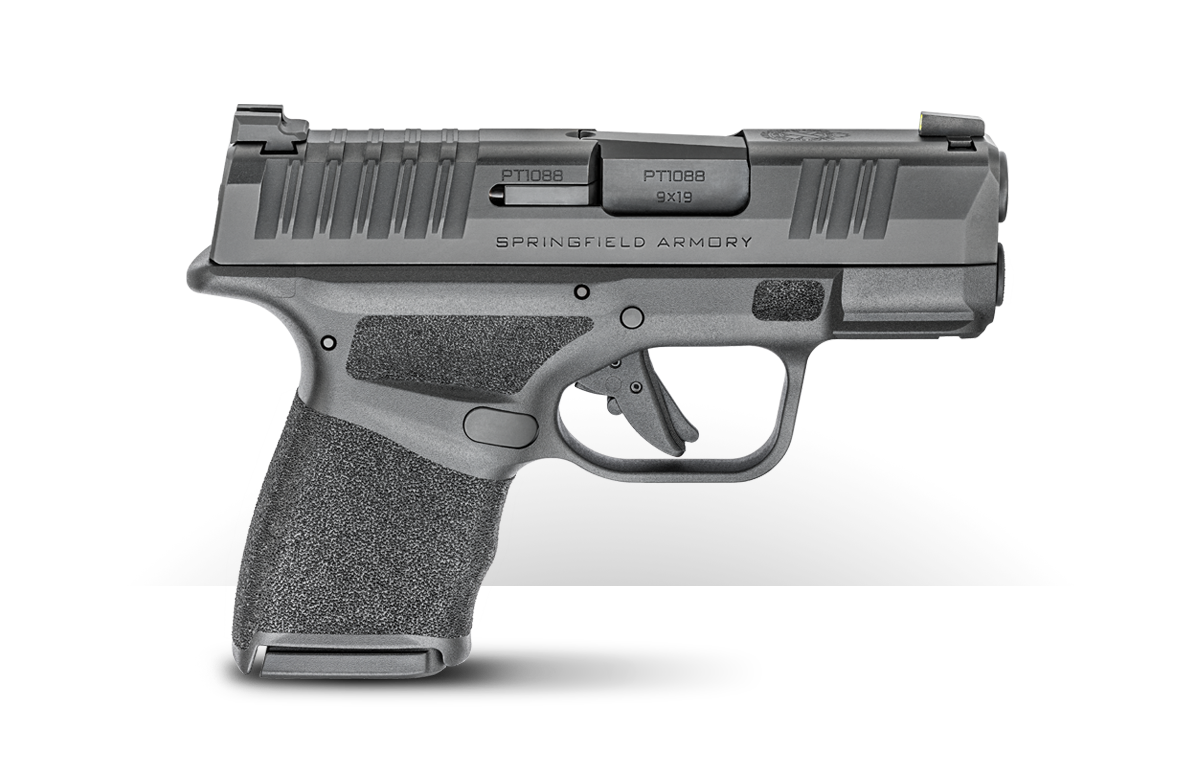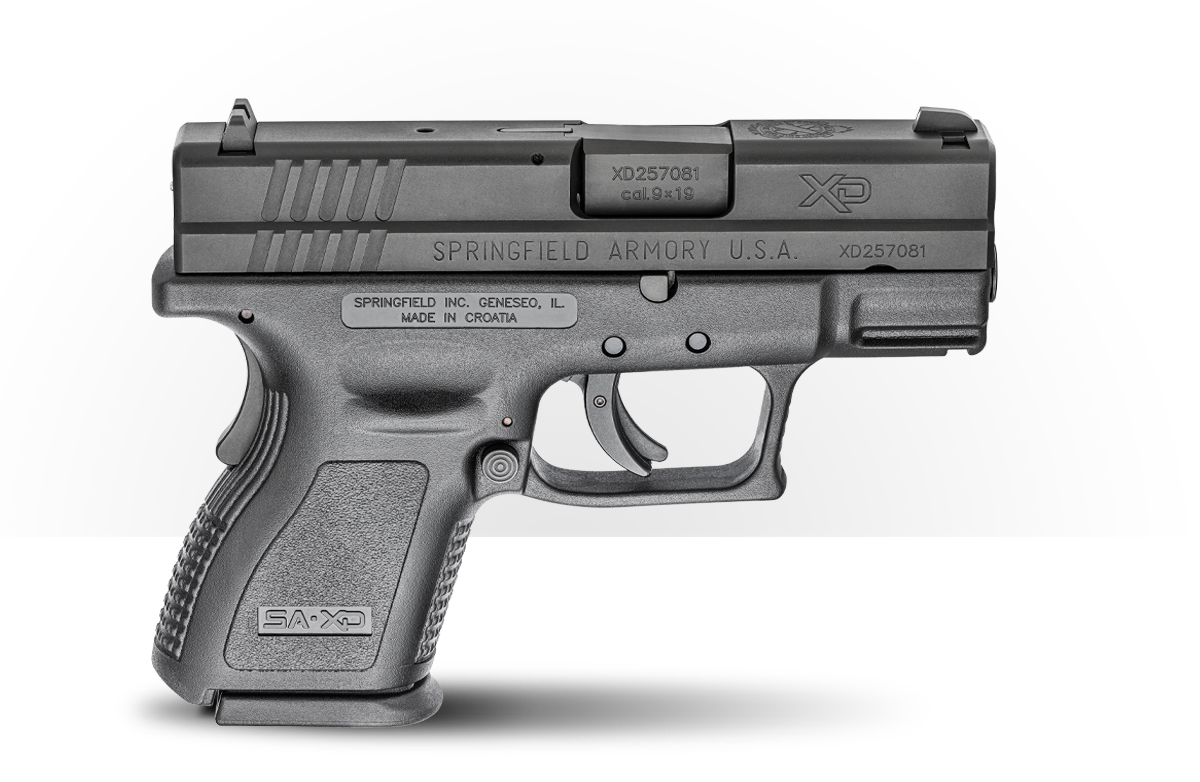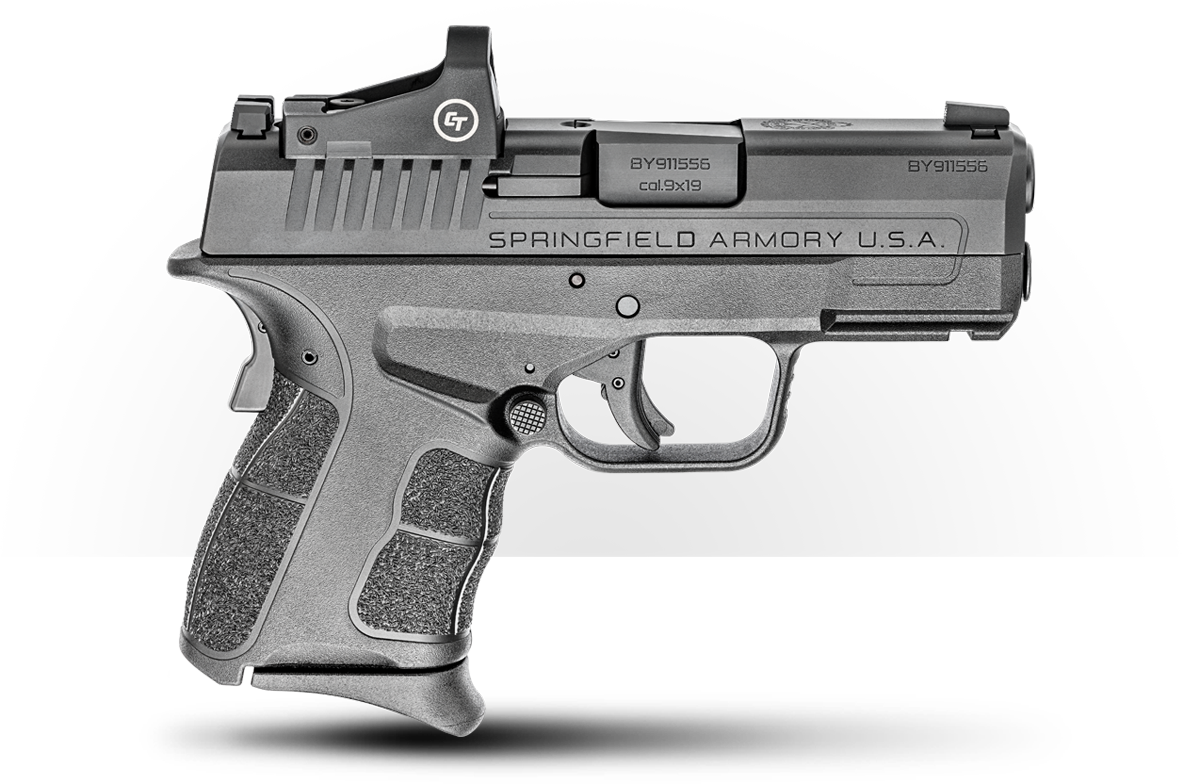Back-Up Guns for Cops: What Do They Use?
October 7th, 2022
7 minute read
BOOM. BOOM. BOOM. CLICK!
Hearing my slide lock back as my last magazine went empty seemed as loud as the gunshots themselves. I dropped the pistol as I went to one knee. From under my uniform pant leg, I pulled my back-up gun.
As the front sight covered the suspect’s face, I pressed the trigger once. Twice. Three times. All three rounds punched through the paper’s X-zone and the instructor called a cold line.
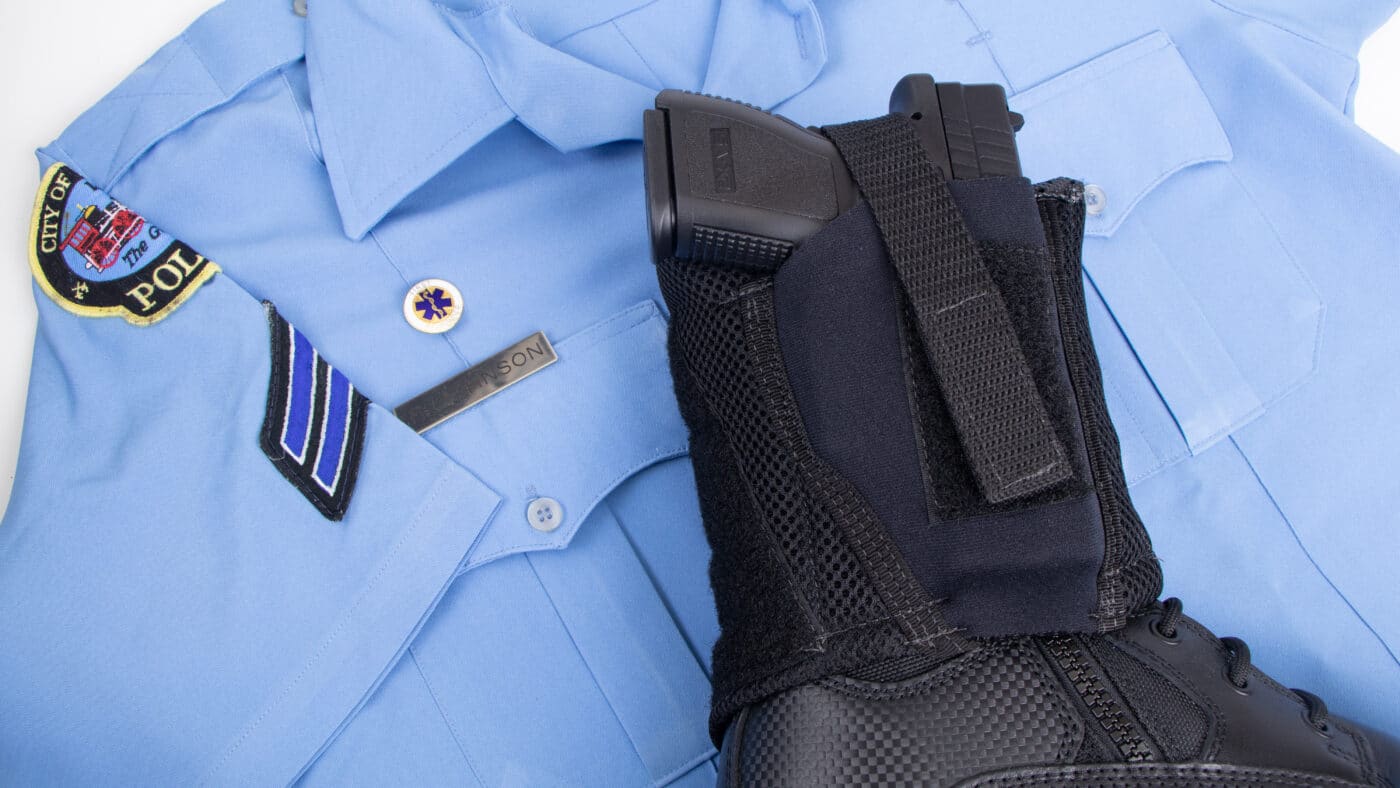
It was an advanced firearms class for local cops. The idea was you bring and train with everything you carry when on duty: radios, batons, pepper spray, shotguns, whatever. In this exercise, it became clear what could happen if you didn’t carry a back-up gun (BUG).
Buying gear never replaces quality training. However, I am a strong supporter of making sure you have the equipment necessary to get the job done. Just like you’d never hit the road without a spare tire in the trunk, you shouldn’t go on patrol without a back-up gun. Should anything ever happen to your primary duty pistol, you need to have a secondary handgun to which you can immediately transition.
What to Carry
When I purchased my first BUG, there weren’t any reliable, subcompact pistols in a major caliber like there are now. Like most cops back then, I selected the ubiquitous small frame .38 Special revolver. Of course, things are much different today.
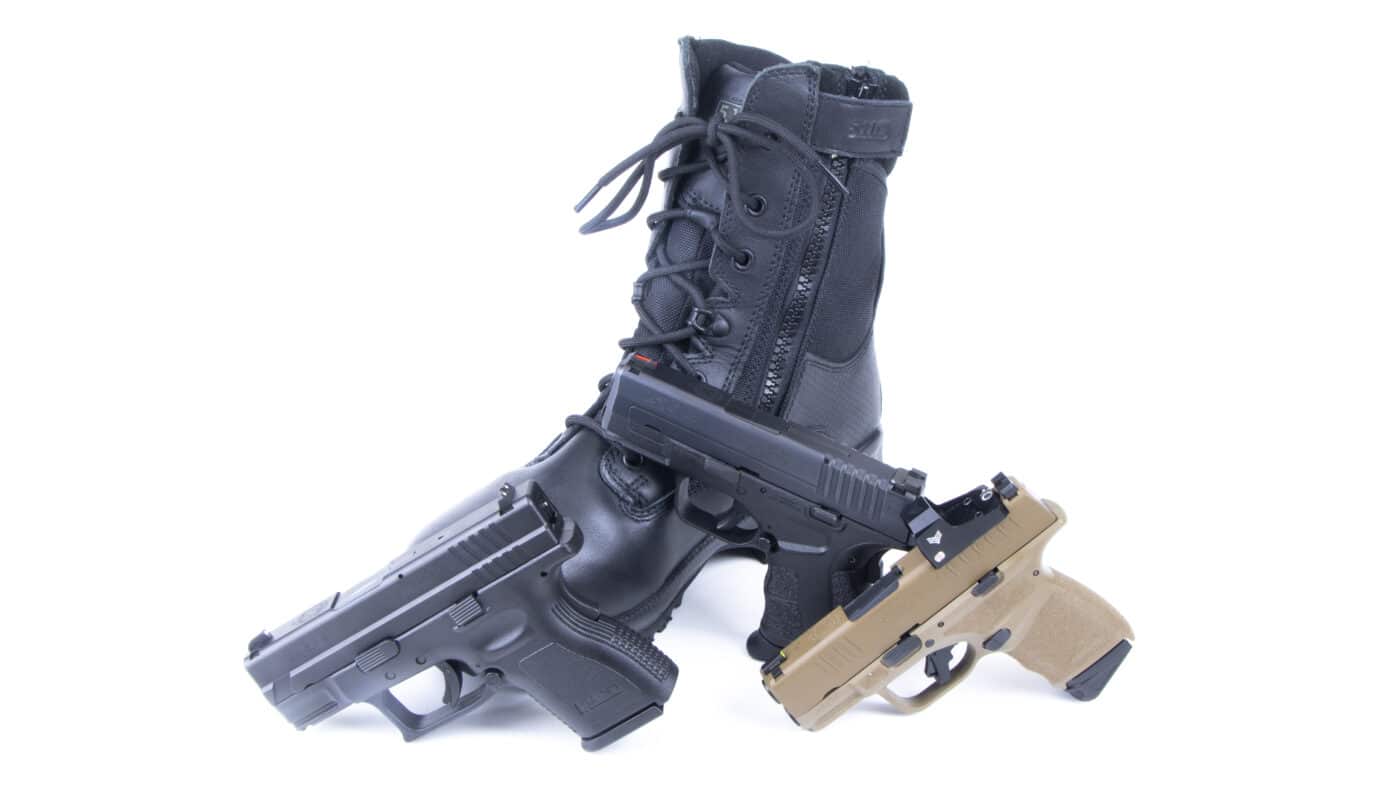
If you look at the Springfield Armory line, there are four pistols that jump out to me as being excellent for back-up work: the XD Sub-Compact, XD-S Mod.2, XD-E and the Hellcat. I’ve got one of each in my safe currently, and all of them proved to be reliable shooters.
Of these, the Hellcat is my first choice. It offers an amazing balance of capacity to size plus allows me to mount the Swampfox Sentinel red dot sight for fast shooting under pressure.
If, however, I was carrying a full-size XD Service Model in my duty holster, I would opt for the XD Sub-Compact. It holds a few more rounds than the Hellcat, plus offers 100% compatibility with the magazines running in my duty pistol.
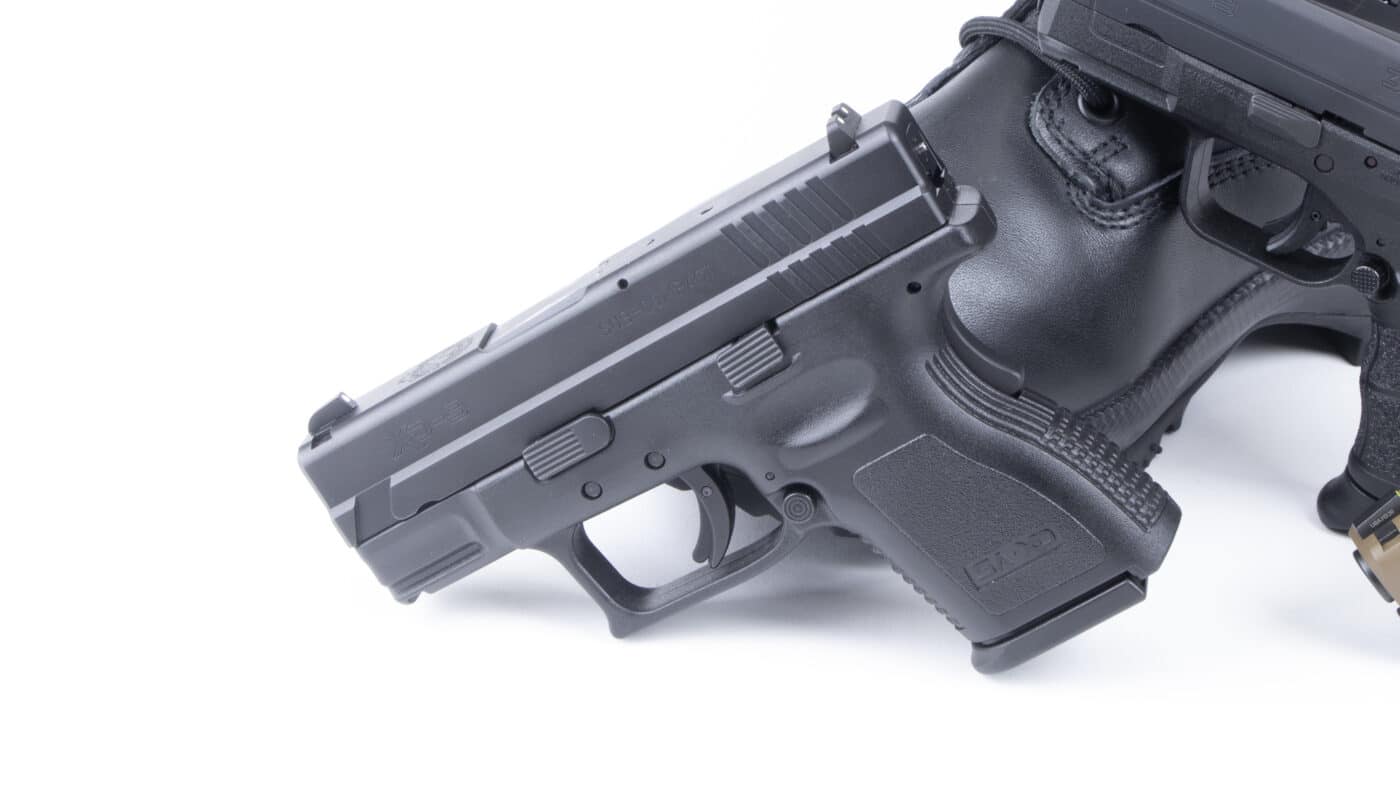
While capacity is nice, the XD-S Mod.2 offers a very flat profile to improve concealability. In an undercover setting, this could be a critical feature. Likewise, you might want to avoid the weight of a heavier pistol, and the trim nature of the XD-S Mod.2 is appealing.
Regardless of what gun you choose, I recommend sticking to the 9mm, .40 or .45. Instead of engaging in the 9mm vs .45 debate, I’ll simply state that these are proven rounds that just seem to work when you are running quality self-defense ammunition. While I only had to use my BUG once on the job, I would have loved one of these Springfield Armory guns backing me up for those many years in uniform.
Where to Carry
Where to carry your BUG may be a matter of personal preference or dictated by your department’s policy manual. If you are bound by agency regulation, go with that. Otherwise, you have some considerations to ponder.
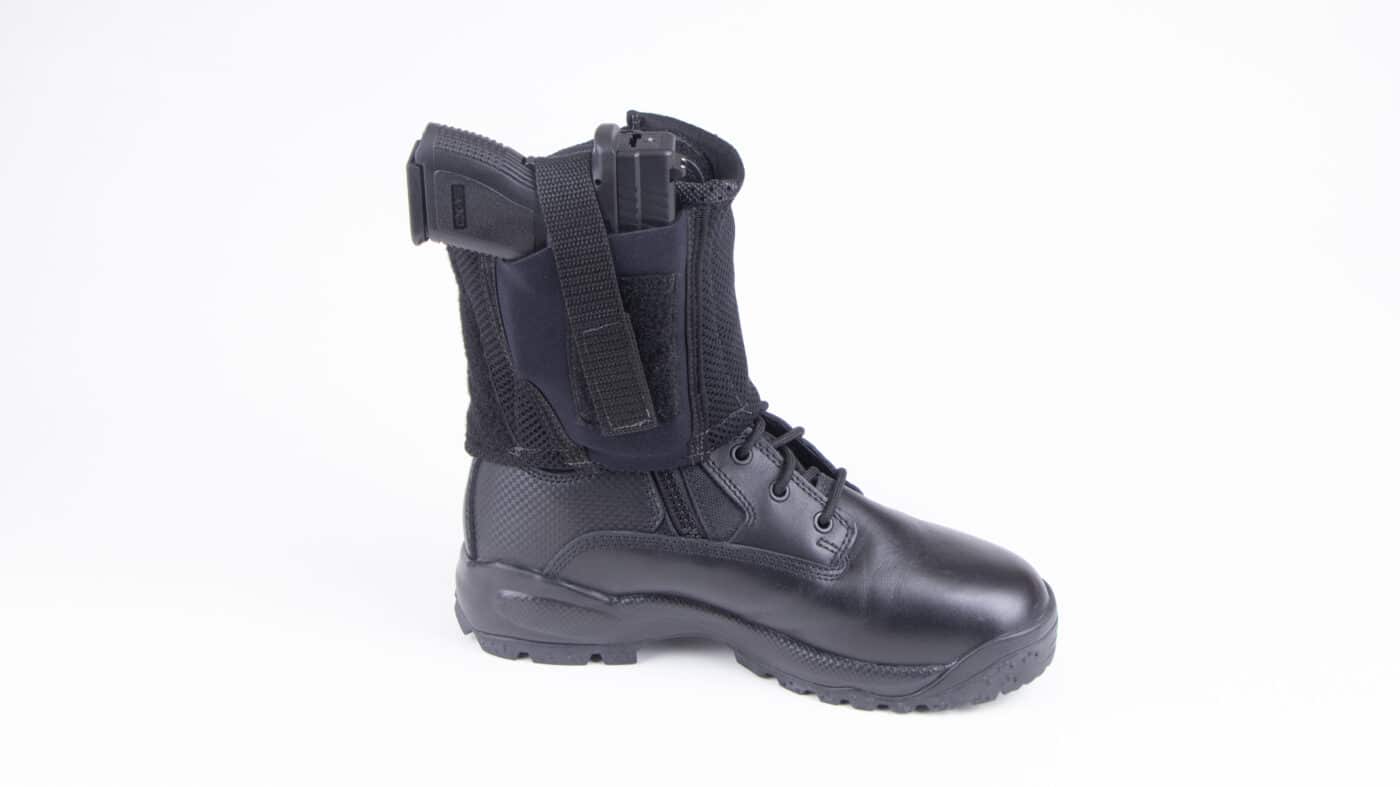
There are three traditional places where a uniformed officer may carry a secondary handgun: on the ankle, on concealable body armor and in a pocket. Each of these places has advantages and disadvantages.
When worn on the ankle, the gun is far away from your hand. To reach it from a standing position will require a gross movement such as dropping to one knee to access it. However, when seated in a patrol car, it is much easier to access. Likewise, if you are already on your knees or back, it can be relatively easy to reach.
I’ve had one story relayed to me about a south Florida police officer who was taken hostage and disarmed. Just prior to his almost being executed by his captors he was forced to kneel, which gave him access to his BUG. He used that second gun to save his life and end the incident.
The downside is that an ankle gun can be difficult to protect should a suspect ever grab your leg. Likewise, the gun may come loose when running or jumping should you opt for a cheap holster.
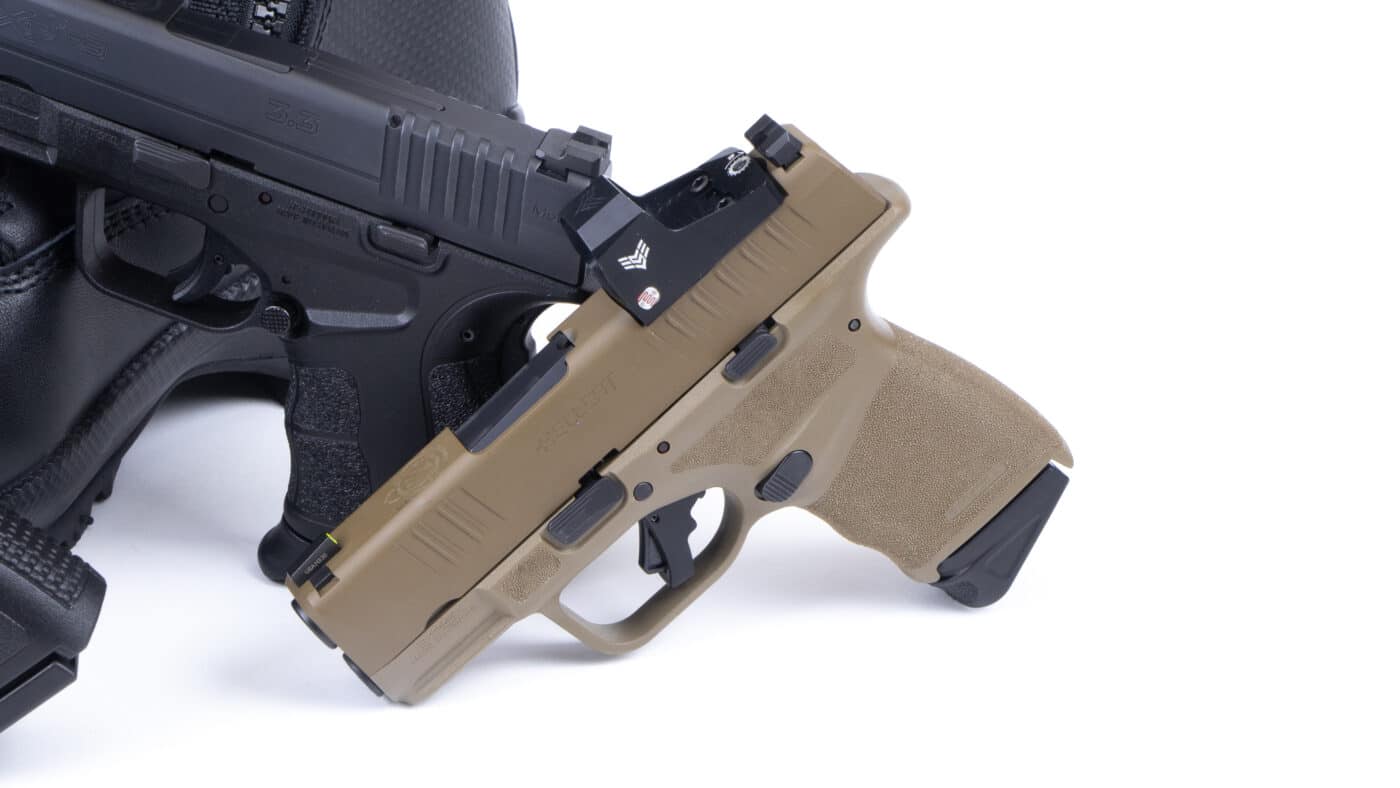
Carrying your back-up gun in a holster attached to your concealed body armor is generally considered to be a more secure position. In many cases, the gun will also be closer at hand than when ankle carried.
I’ve found in some cases that drawing from a body armor holster can be slower than from an ankle holster. Just like the ankle holster, a gun secured to your body armor may not be readily accessible when tangled up with a suspect.
Carrying in a pocket is also an option for some officers. During the winter, a back-up gun in a jacket pocket may give you a faster alternative to the other carry locations. Additionally, when approaching a suspicious incident, your hand could be on the gun without causing any concern to the casual viewer. Just make sure you have a way to secure it.
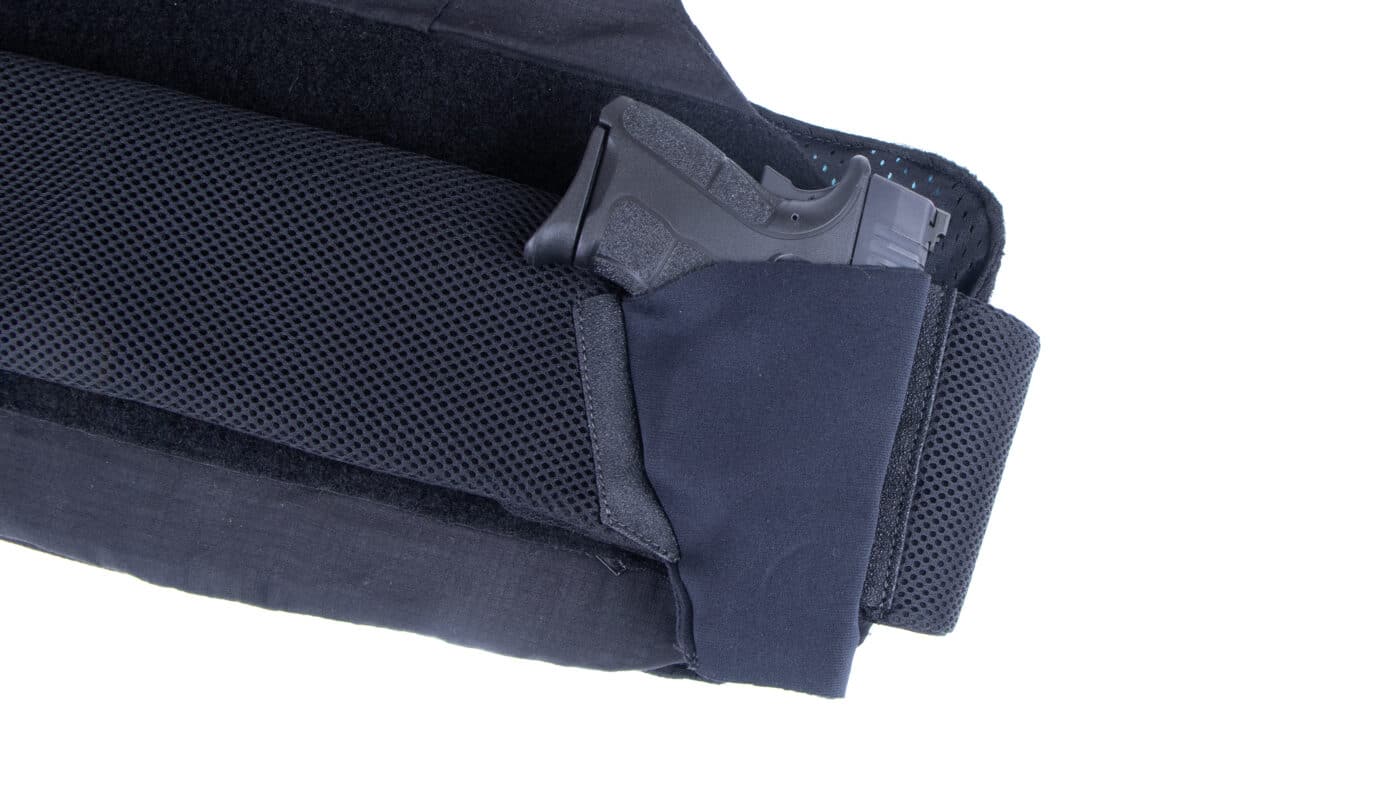
Pants pocket carry may also be an option for some officers. While I found this was not a good option in the front pockets of a tailored uniform pant, it can be a good choice for officer issued pants with cargo pockets. In general, the slant pockets and cargo pockets are more generously sized and can carry a BUG.
Your duty assignment may preclude certain kinds of carry. For example, I have a friend who was assigned to the marine unit of a large department in Florida. His uniform included shorts, so ankle carry was right out. However, the same officer had cargo pockets and a concealment vest he could, and did, use for the concealment of a secondary weapon.
I highly recommend that you test any location you are considering with a quality holster and an unloaded gun. Run, jump and wrestle with your partner to see how secure the equipment is in the location you have selected.
In my time in uniform patrol, I typically carried two back-up guns: one on my ankle and another on my vest. Neither location was ideal for all situations, so I figured I should hedge my bets. If things were going to go bad on me, I suspected they would go all the way bad and I would need every advantage I could muster.
Can’t Carry? Dealing with Administrators
One of the most significant problems law enforcement officers still encounter is administrative interference in the patrol function. I do not mean that officers should not be properly supervised and held accountable for their actions. Rather, I refer to the common problem of command staff personnel with little experience in patrol work imposing bad ideas on the officers tasked with one of the most dangerous jobs in the world.
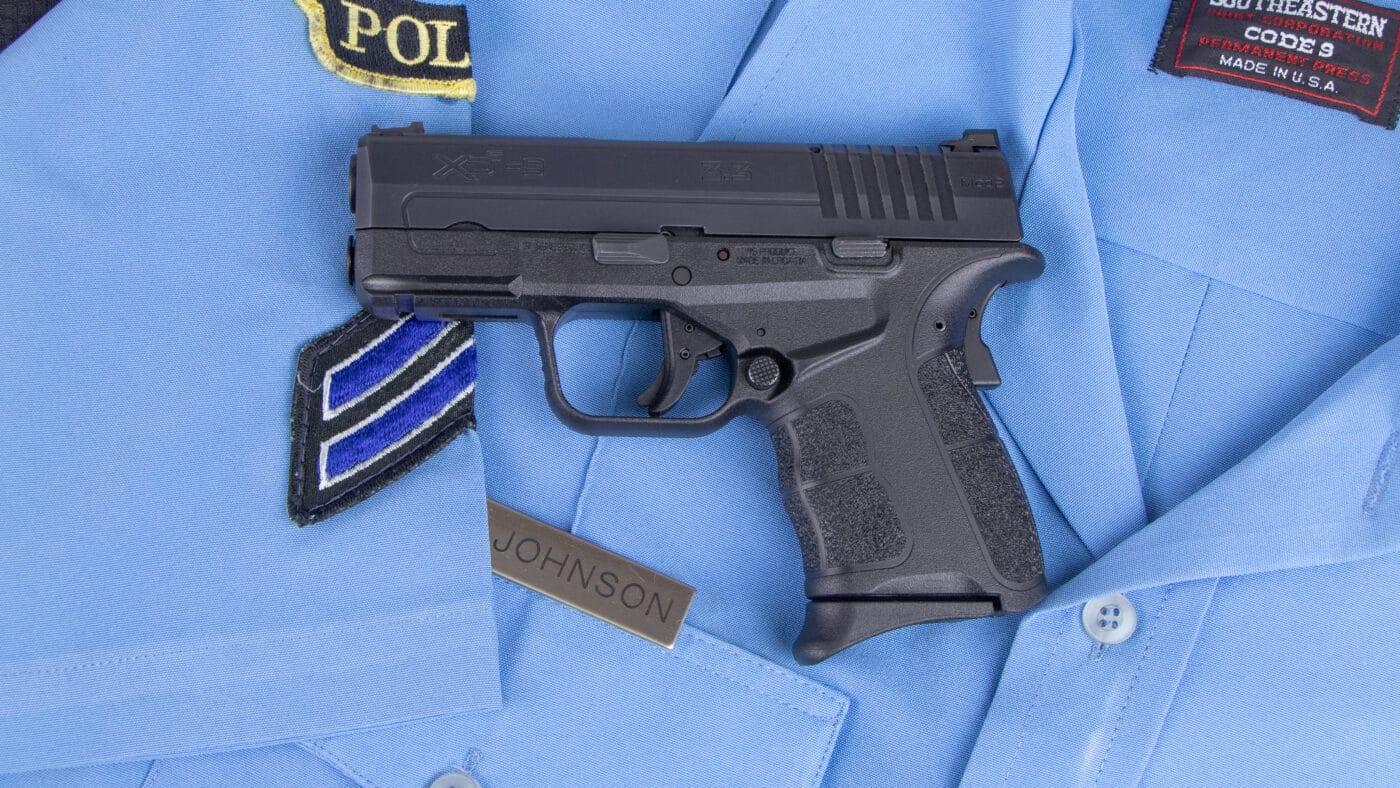
Even today, there are some police administrators who don’t see a need for back-up guns. I’ve encountered one captain who believed that officers only wanted a back-up gun as a “throw down” to plant on a wrongfully shot suspect. Frankly, I’ve found administrators who hold that belief to be projecting — ascribing their questionable thinking onto hard-working cops who deserve better leadership.
Fortunately, even administrators who are not inclined to approve back-up guns may do so when approached the right way. In some agencies, a BUG policy may be introduced by any officer. Other departments might be more receptive when the request is made by a lieutenant or through your union. Understand the politics within your department and choose the approach that creates the best opportunity for approval.
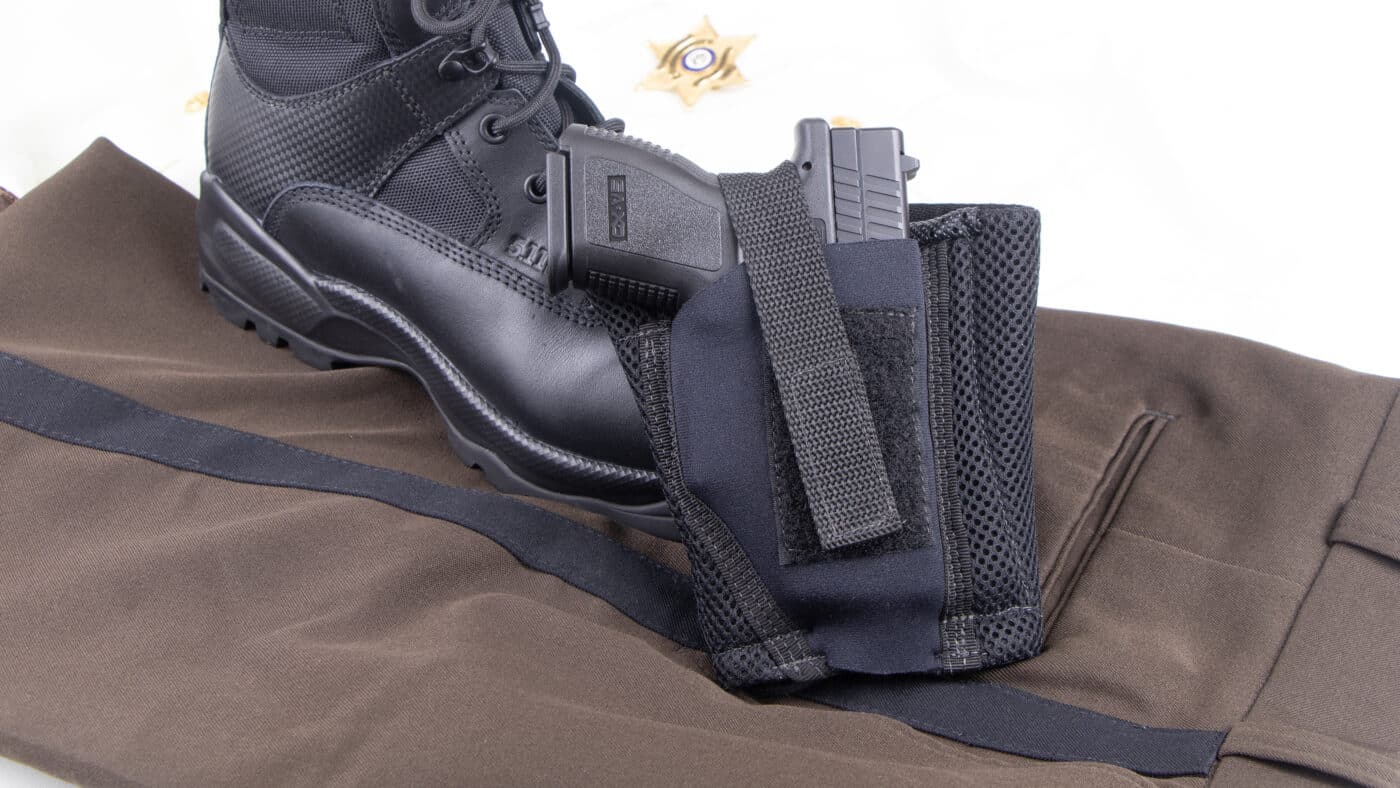
I’ve had success with changing a large department’s prohibition on back-up guns. Initially, I shopped the idea around informally to gauge support. Once the ice had been broken on the topic, I compiled a proposal that included:
- A cover letter introducing the policy change request
- A copy of the suggested policy
- Details from the state and national law enforcement accreditation organizations that indicated the recommended policy was acceptable within those frameworks
- Examples of real-life incidents in which back-up guns were essential to the survival of officers
- A list of neighboring departments and other agencies within the state that allow and/or issue back-up guns to officers
My goal was to present clear and convincing evidence that a back-up gun policy was needed, and that the department administration would have to do substantially more work to deny it than to accept it.
It worked.
Even though I had been told by every person in the department that it would never be approved, my policy recommendation was accepted without any significant objections.
I’m not suggesting that your agency will be as receptive. However, with the right approach, it is possible to get a policy changed. Since we are talking about potentially lifesaving equipment, isn’t that a battle worth fighting?
Editor’s Note: Please be sure to check out The Armory Life Forum, where you can comment about our daily articles, as well as just talk guns and gear. Click the “Go To Forum Thread” link below to jump in!
Join the Discussion
Featured in this article
Continue Reading
Did you enjoy this article?

 164
164




